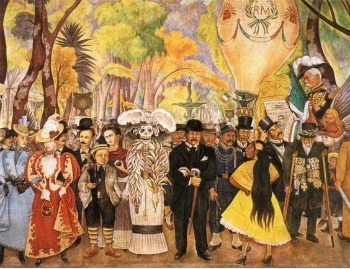Muralism is the type of art supported by walls and permanent panels. Thus, it is particularly linked to architecture.
Also known as mural painting or mural art, muralism provides a close relationship with the public. This happens as his works are found on the streets and explore social problems as well as historical themes.
Muralist art plays a very strong social role, as it takes advantage of public exposure to express itself critically.
With a strong presence in Mexico, where this artistic movement emerged, the first manifestations of what would become muralism are cave paintings.
It can be said that Muralism is a mexican art that emerged in the first half of the 20th century in Mexico.
It was also at this time that the Mexican Revolution (1910) began, a historic moment that inspired artists to express their critical thoughts.
Therefore, this artistic expression reveals much of what was experienced in Mexico. It was a moment when, without a doubt, the people carried a strong sense of libertarian commitment.
To understand the seriousness of this event, read mexican revolution.
In 1920, after assuming the position of Secretary of Education, Vasconcelos Calderon proposed the construction of murals. The aim was for them to portray the history of Mexico and promote nationalism.
mexican muralists
To move his art project forward, Vasconcelos Calderon invited three artists. They were Diego Rivera (1886-1957), David Alfaro Siqueiros (1896-1974) and José Clemente Orozco (1883-1949).
Because they were the promoters of the muralist movement, they became known as “the big three”.
The greatest representative of this art is Diego Rivera (1886-1957), an artist who promoted the popularity of Muralism.
This happened because of the success of the gigantic murals painted by the artist. His murals can be seen in the United States, Poland and China.




Brazilian Muralism
In Brazil, Cândido Portinari (1903-1962) is the outstanding artist in mural art. Brazilian muralism, however, has characteristics quite different from Mexican muralism.
This mainly takes into account the circumstances of how the art emerged among the Mexicans, as well as its purpose.
In the case of Portinari, his work also reflects a concern with social aspects. Despite this, in aesthetic terms, the artist has characteristics of a very particular style.

read rock art.



